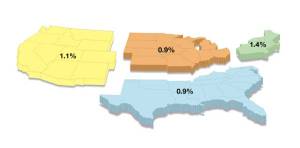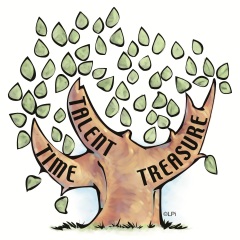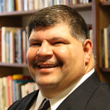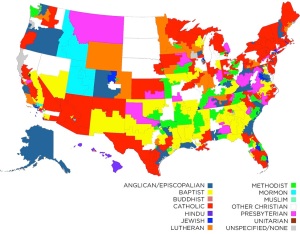This is the second of five reflections on Sara Miles’ book Jesus Freak.
You can find the intro to Miles and my first reflections here.

For Sara Miles, one of the most significant themes of her story and her life is feeding the hungry. With her work at St. Gregory’s of Nyssa Food Pantry, Milescomes back to the idea of food and eating together over and over again. She tells of the chaotic worship that occurs every time the food pantry opens, the community of abundance and compassion, and the mercy that keeps it all together.
There is a story in “Feeding” that communicates two of the most important reminders to all of us: 1) the behaviors many people associate with people in poverty are just as common among people of every socioeconomic status, and 2) we cannot assume we know why people need food assistance or why they exhibit particular behaviors. In this story, Miles visits a fourth grade class at a private elementary school just a few blocks from St. Gregory’s who had volunteered at the Food Pantry the week before. As soon as Miles walked in, she said she was bombarded with questions: “How do you know the people who come get food really need it? How come some people have cars and cell phones but they still get free food? Do people take advantage of you? Why do some people act crazy or yell when they’re waiting for food? What do you do to keep people from cheating?” (36). These questions don’t just come from fourth graders; I have heard some of the same questions asked by adults, by college students, by people who are concerned with what’s fair and who Other those who come for assistance.
 If I can go on a tangent for a moment, reading this story (and this whole chapter, to be honest) made me think about my experience in San Francisco in January of this year, serving at Glide Memorial Church in their Daily Free Meals program. There were 13 of us in all – ten college students and three faculty members – and we had many discussions talking about these same things the 4th graders had asked Miles. We talked through a lot of the Othering that happens at food ministries, and how we contribute to it, and what we do about it without feeling guilt for our socioeconomic status. We talked about the range of stories from the people we met, many of whom lived on the street but also people who worked or were in school and came for a hot lunch. There were conversations about people who appeared ungrateful for the food, and the reminder that we had no idea what was going on in their lives that had nothing to do with the 20 minutes they spent in the Glide cafeteria. It was a trip that brought up questions of need, of assumptions, and of fairness. It was much like what I imagine happening in that classroom of fourth graders.
If I can go on a tangent for a moment, reading this story (and this whole chapter, to be honest) made me think about my experience in San Francisco in January of this year, serving at Glide Memorial Church in their Daily Free Meals program. There were 13 of us in all – ten college students and three faculty members – and we had many discussions talking about these same things the 4th graders had asked Miles. We talked through a lot of the Othering that happens at food ministries, and how we contribute to it, and what we do about it without feeling guilt for our socioeconomic status. We talked about the range of stories from the people we met, many of whom lived on the street but also people who worked or were in school and came for a hot lunch. There were conversations about people who appeared ungrateful for the food, and the reminder that we had no idea what was going on in their lives that had nothing to do with the 20 minutes they spent in the Glide cafeteria. It was a trip that brought up questions of need, of assumptions, and of fairness. It was much like what I imagine happening in that classroom of fourth graders.
Back to Miles – she goes on to lead the 4th graders through a little exercise and reflection:
“How many of you have ever taken the best piece for yourself, or stolen something?” I asked, raising my own hand.
Slowly, every hand went up. “How many of you have ever been generous and given something away?” Every hand went up.
“Yeah,” I said. “You know, poor people cheat and steal and are really annoying. Just like rich people. Just like you. And poor people are generous and kind and help strangers. Just like rich people. Just like you.”
And we are reminded that those in poverty and those with excessive wealth and those with just enough to live comfortably, we can all be shitty people and we can all be compassionate people. And we can all go to the food pantry at St. Gregory’s or the free meal at Glide Memorial, because we may be a broke college student or living on the street or employed but at minimum wage. It doesn’t matter, and it’s not our place to decide whether someone looks like they need to be fed or not.

How often have we taken the best piece for ourselves? How often have we seen generous and kind acts from someone unexpected? Feed without questions, be fed without resentment, and invite everyone to the table.









 here. The first is an amazingly profound statement – “If Jesus is about anything, it’s the inconvenient truth that a spiritual life is a physical life” (xviii). Just think about that for a second. Miles is saying that Christians (and I would argue religious people of most any tradition) cannot just get by on inner spirituality. Physical acts of humility, justice, mercy, and love are just as important. We have to interact with God’s world to continue to walk forward with God.
here. The first is an amazingly profound statement – “If Jesus is about anything, it’s the inconvenient truth that a spiritual life is a physical life” (xviii). Just think about that for a second. Miles is saying that Christians (and I would argue religious people of most any tradition) cannot just get by on inner spirituality. Physical acts of humility, justice, mercy, and love are just as important. We have to interact with God’s world to continue to walk forward with God.










